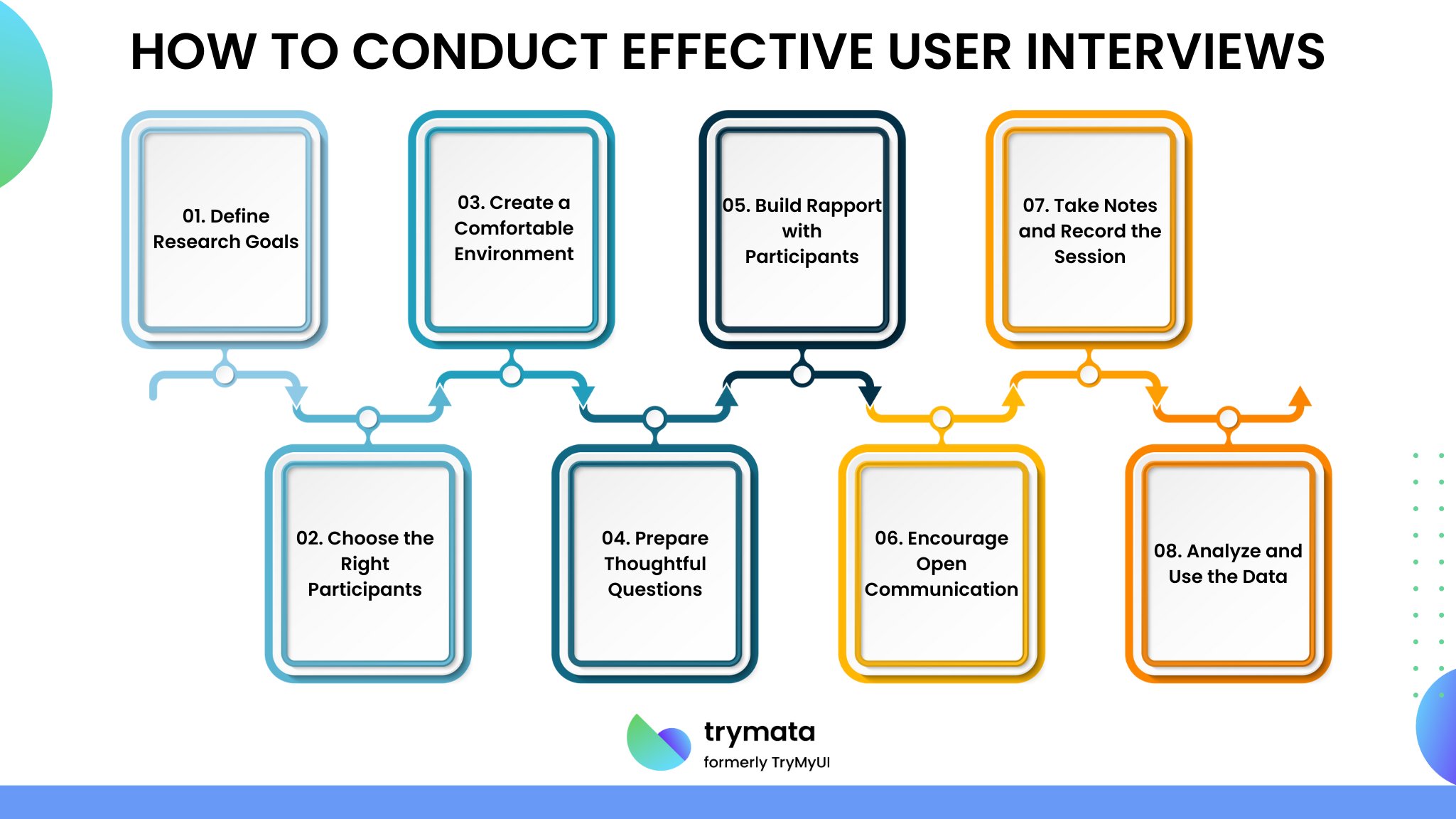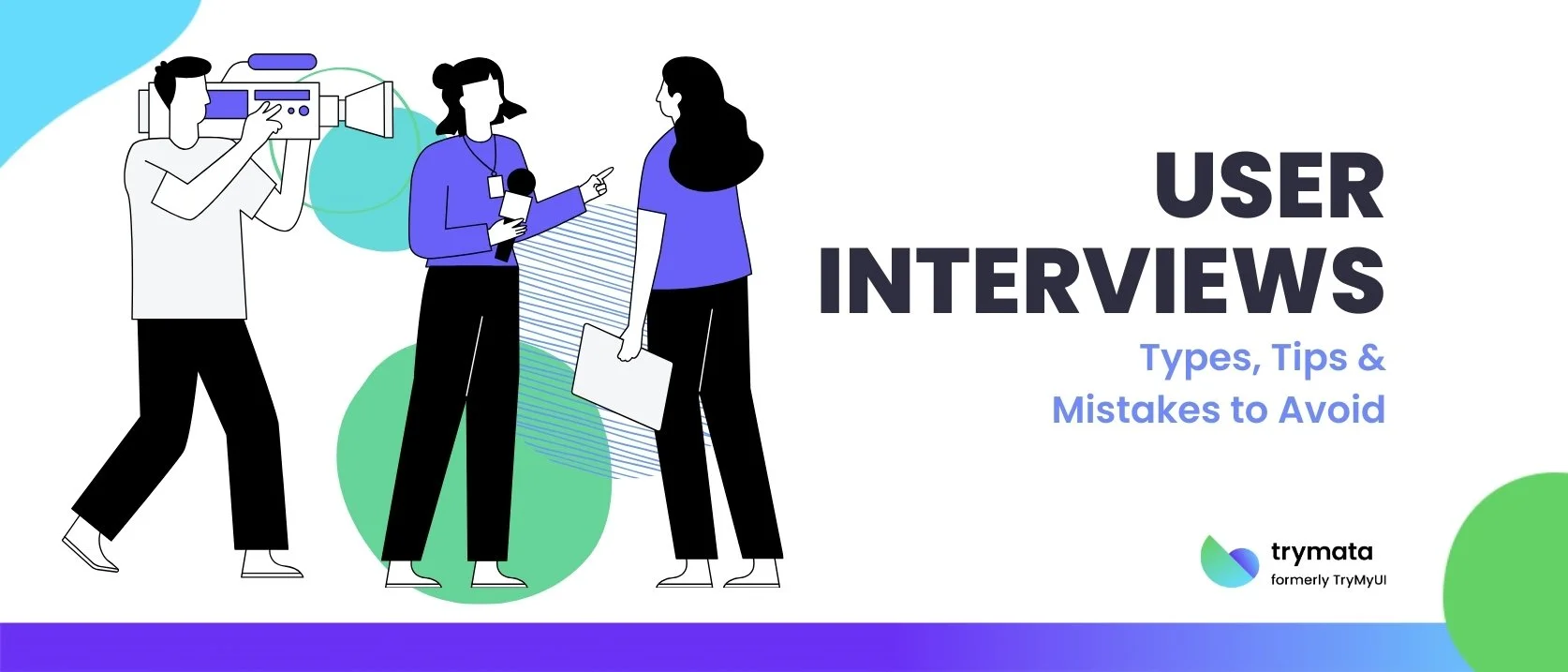Understanding users is essential for designing products that truly meet their needs. User interviews provide direct insights into user experiences, behaviors, and pain points, making them vital to UX and market research.
Unlike quantitative data, these interviews offer qualitative insights that delve deeper into users’ feelings and motivations. Whether conducted in person, via Zoom meetings, or contextual interviews, they help uncover actionable insights shaping the design process.
This blog explores the importance of user interviews, the different types, best practices for conducting them, and common mistakes to avoid—ensuring you gather high-quality data to enhance your research efforts.
What are User Interviews?
User interviews are a vital research method in UX research and usability testing. They involve engaging with users to understand their needs, behaviors, and challenges. These interviews provide valuable insights that help refine future products and improve user experience.
User interviews can be conducted in various ways, such as in-depth interviews, contextual interviews, and focus groups. Each approach allows researchers to gather qualitative and quantitative data, depending on the research objectives.
Unlike other research techniques, interviews enable researchers to explore users’ feelings and experiences in a natural environment where they feel comfortable expressing their thoughts.
Importance of Conducting User Interviews
User interviews play a crucial role in UX research and market research. They provide actionable insights that help businesses and designers improve products and services based on users’ experiences. The insights from such interviews can inform the design process, ensuring that products meet user expectations.
Key Benefits of User Interviews:
- Understanding User Needs: Conducting interviews helps researchers understand the target audience and their pain points.
- Identifying Problems Early: User interviews reveal usability issues in actual time, allowing for early intervention in the design project.
- Gathering Qualitative Data: Unlike quantitative data, interview data provides nuanced insights into users’ feelings and motivations.
- Enhancing Usability Tests: The feedback collected through interviews can improve usability tests by highlighting areas that need further evaluation.
- Supporting Other Research Methods: User interviews complement longer diary studies, focus groups, and other research methods to create a comprehensive view of user behavior.
Types of User Interviews
Depending on research goals, different types of user interviews can be conducted. Each research type offers unique advantages and is best suited for particular stages of a design process.
1. Structured Interviews
In structured interviews, researchers follow a predefined set of questions. This method ensures consistency across all participant responses, making it easier to compare and analyze data collected.
2. Semi-Structured Interviews
Semi-structured interviews combine a structured approach with open-ended questions. This format allows researchers to gather valuable insights while maintaining flexibility to explore new knowledge that arises during the conversation.
3. Unstructured Interviews
Unstructured interviews are more conversational, with no fixed set of questions. Researchers adapt their approach based on the participant’s responses, creating a comfortable environment for open discussion.
4. Contextual Interviews
Contextual interviews are conducted in the participant’s natural environment, such as their workplace or home. This method allows researchers to observe how users interact with products in real-life scenarios, providing deeper insights into usability and workflow.
5. In-Depth Interviews
In-depth interviews are one-on-one sessions that explore a topic extensively. These interviews require time but provide rich qualitative data that can significantly impact future products.
6. Focus Groups
While not a one-on-one method, focus groups involve multiple participants discussing their experiences. These sessions help identify common trends and insights across different users.
How to Conduct Effective User Interviews
Conducting effective user interviews requires careful planning and execution. Here’s a step-by-step approach to ensure high-quality participants and actionable insights.

01. Define Research Goals
Before starting, clarify the research goals and the type of data collected. Are you looking for qualitative data or quantitative data? Are you conducting semi-structured interviews or structured ones?
02. Choose the Right Participants
Recruit quality participants who match your target audience. This ensures the insights are relevant to your design project.
03. Create a Comfortable Environment
Whether in-person or through a Zoom meeting, ensure participants feel relaxed and willing to share their thoughts. A comfortable environment helps build trust and encourages open dialogue.
04. Prepare Thoughtful Questions
Use a mix of open-ended questions and specific ones to gather meaningful insights. Avoid leading questions that might bias the responses.
05. Build Rapport with Participants
Start with a casual conversation to make participants feel relaxed. Show empathy and actively listen to their responses.
06. Encourage Open Communication
Give participants the freedom to express themselves without interruption. Probe deeper when needed by asking follow-up questions.
07. Take Notes and Record the Session
Documenting the session ensures that no critical insights gathered are lost. Recording can also help during data analysis.
08. Analyze and Use the Data
Once the initial interview data is collected, it will be analyzed for patterns and trends. Use the insights to refine the design process and make informed decisions.
Common Mistakes to Avoid During a User Interview
While user interviews are a valuable research method, certain mistakes can compromise the quality of the insights.
- Asking Leading Questions – Avoid influencing participants’ answers.
- Not Listening Actively – Pay attention to the participant’s words and probe deeper.
- Rushing Through Questions – Give participants enough time to respond thoughtfully.
- Ignoring Context – Consider the natural environment and how users interact with products in real-life scenarios.
- Failing to Follow Up – Don’t miss opportunities to explore new insights through follow-up questions.
- Choosing the Wrong Participants – Ensure that your sample reflects your target audience.
- Not Offering Incentives – Small rewards like a Visa gift card can motivate participation.
- Overlooking Other Research Methods: For additional validation, Use other user research methods, such as usability tests and longer diary studies.
Conclusion
User interviews are versatile tools in UX research that help researchers better understand their users. Researchers can extract meaningful insights from participants by carefully selecting research methods, asking the right questions, and ensuring a comfortable environment.
User interviews and other research methods, such as usability tests and focus groups, contribute to more informed decision-making in the design process.
Organizations can refine their market research by following these best practices, avoiding common mistakes, considering different research techniques, and creating better user products.
Whether conducted in person or via a Zoom meeting, well-executed user interviews help uncover users’ feelings, challenges, and expectations, leading to a more user-centric design project.




